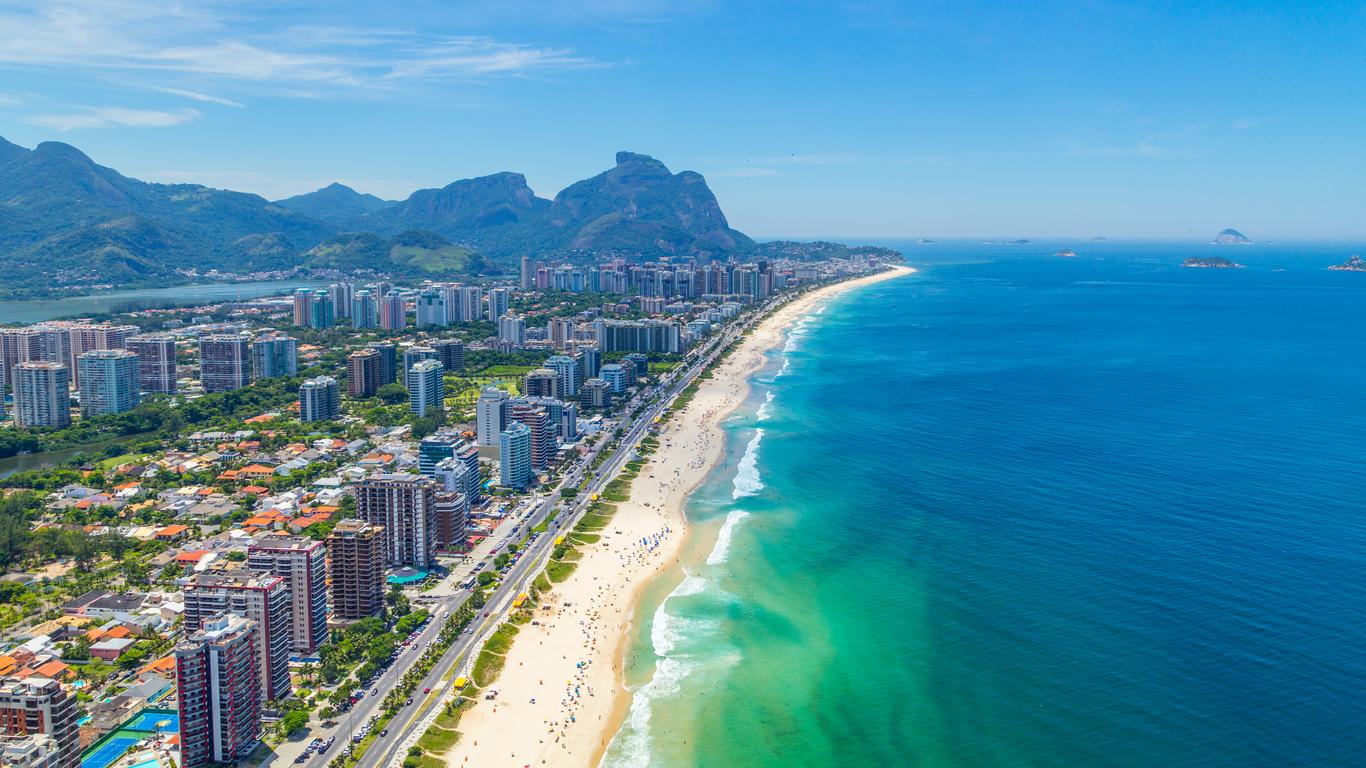Although located beyond the limits of Rio de Janeiro, Barra da Tijuca retains all the energy, movement and excitement of the city centre while possessing its own unique atmosphere and selection of attractions. It is in the West Zone of Rio on the Atlantic Ocean, where all of its popular and beautiful beaches can be found and is one of the most developed areas of Brazil, known for its exclusive lifestyle. It is the home of many footballers and celebrities, and the area primarily hosted the 2016 Olympic Games due to its wealthy status, strong infrastructure and gorgeous location.
Visitors to Barra da Tijuca can immediately tell it is the youngest region of Rio de Janeiro due to the extensive amount of skyscrapers in the area, which host offices, condos, apartments, gyms, pools and all else required for a luxury cosmopolitan lifestyle. The area is home to some of the best features in Rio, including the largest beach in the city, the largest shopping centre in South America, Barra Shopping, and the largest music complex on the continent, the Cidade das Artes. Following the 2016 Olympic Games, visitors can also explore the major sports venues used during the event, and there is an abundance of shopping opportunity at the many malls such as Barra Shopping and the Village Mall. The nightlife in Barra da Tijuca is buzzing, and the city streets are full of energy with some of Brazil’s most significant bars and clubs, and the dining options are similarly exciting, offering international cuisine and especially focusing on the dishes of Europe and Asia.
Barra de Tijuca is well connected to the city centre of Rio, with a straight road going to the neighbourhood only 30 kilometres away. Visitors can travel from the central train station of the main airport via public transport, with various buses navigating the city and its surrounding areas in addition to the city metro.
Before its urban development, Barra da Tijuca was one large beach full of swamps and sand banks that left it undeveloped until the 1900s. Urbanisation was a gradual process, helped by the creation of the Lagoa-Barra Highway in the 1970s and the construction of the Yellow Line, connecting to the North Zone of Rio and its airport. Consequently, there was a population boom and many condos, malls and complexes developed along the city boulevards, forming the major urban centre it is today.





